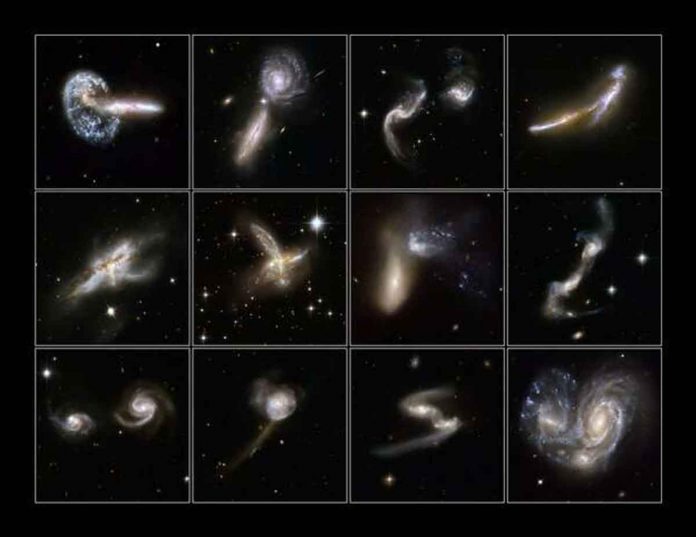A careful examination of the composition and motion of over 500 stars revealed conclusive evidence of an ancient collision between Andromeda and a neighboring galaxy. The findings, which improve our understanding of the events that shape galaxy evolution, were presented Monday at the American Astronomical Society meeting by Carnegie’s Ivanna Escala.
Galaxies grow by absorbing material from nearby objects, such as other galaxies and dense clumps of stars known as globular clusters, which occur frequently in the aftermath of a catastrophic collision. And these events leave behind relics in the form of stellar associations known as tidal features by astronomers. This can take the form of elongated streams or arcing shells moving around the surviving galaxy. These phenomena can help us understand the history of a galaxy and the forces that shaped its appearance and makeup.
“Each crash’s remnants can be identified by studying the movement of the stars and their chemical compositions. This information, when combined, serves as a kind of fingerprint that identifies stars that collided with a galaxy “Escala elaborated.
She and her colleagues—Karoline Gilbert and Mark Fardal of the Space Telescope Science Institute, PuragraGuhathakurta of UC Santa Cruz, Robyn Sanderson of the University of Pennsylvania, Jason Kalirai of the Johns Hopkins Applied Physics Laboratory, and Bahram Mobasher of UC Riverside—investigated 556 red giant branch stars in the Northeast shelf, a physical feature of Andromeda that forms a sharp ledge in the density of the galaxies.
“We performed the first detailed characterization of the chemical composition and geometric motion of the stars in this region of our neighboring galaxy,” Escala said.

Their research also shows that the NE shelf is part of a multi-shell system that includes the galaxy’s West and Southeast shelves, and that the material in these regions is consistent with that of Andromeda’s Giant Stellar Stream, implying that all of these tidal features may have originated from the same source.
“Our findings are consistent with modelling predictions that the Giant Stellar Stream is the first material loop from a collision and the NE shelf is the second layer wrap-around,” Escala concluded.
This level of analysis confirms previous predictions about Andromeda’s violent past and contributes to astronomers’ understanding of how material accreted by collisions shapes a galaxy’s surrounding features and evolutionary history.

